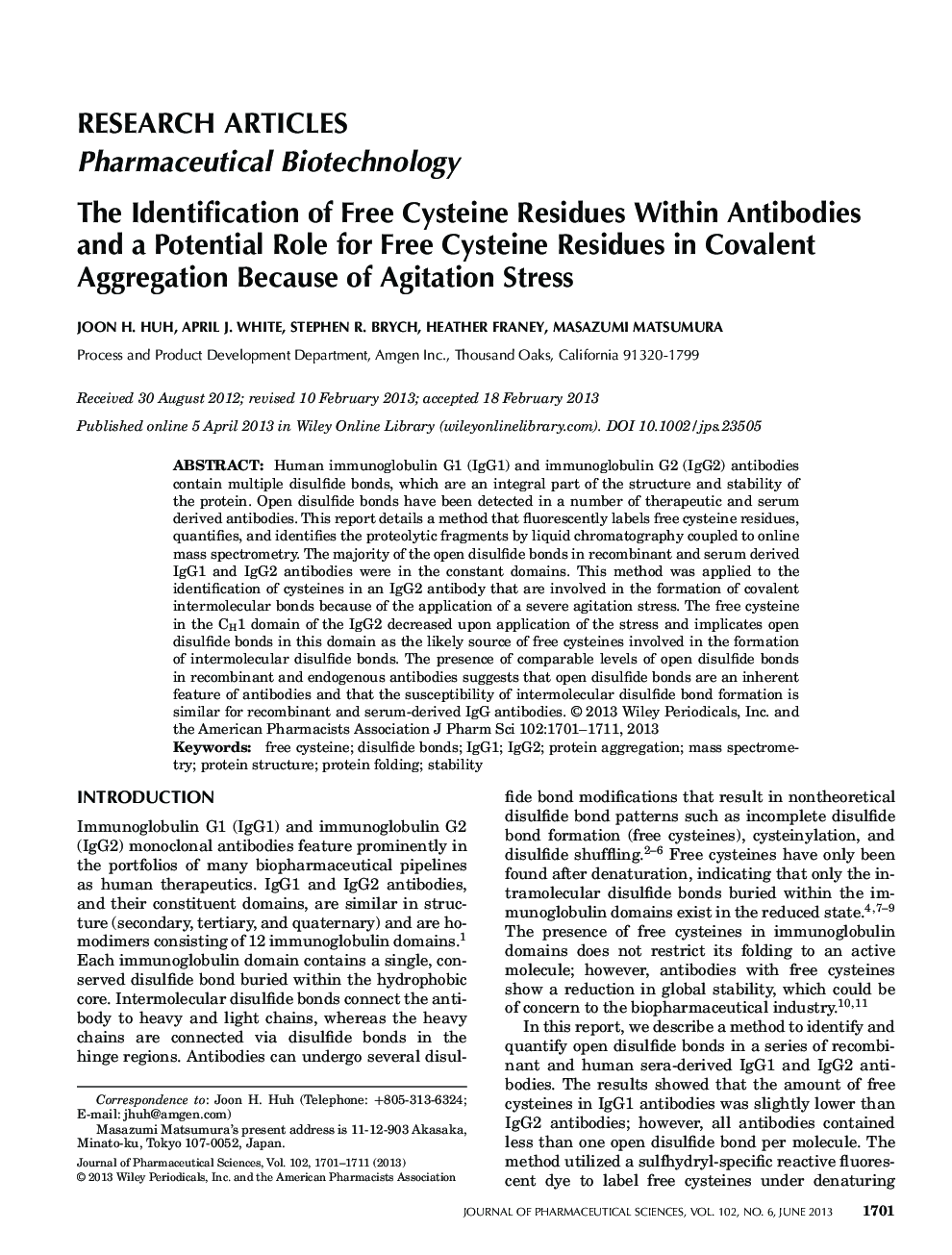| Article ID | Journal | Published Year | Pages | File Type |
|---|---|---|---|---|
| 2484968 | Journal of Pharmaceutical Sciences | 2013 | 11 Pages |
Abstract
Human immunoglobulin G1 (IgG1) and immunoglobulin G2 (IgG2) antibodies contain multiple disulfide bonds, which are an integral part of the structure and stability of the protein. Open disulfide bonds have been detected in a number of therapeutic and serum derived antibodies. This report details a method that fluorescently labels free cysteine residues, quantifies, and identifies the proteolytic fragments by liquid chromatography coupled to online mass spectrometry. The majority of the open disulfide bonds in recombinant and serum derived IgG1 and IgG2 antibodies were in the constant domains. This method was applied to the identification of cysteines in an IgG2 antibody that are involved in the formation of covalent intermolecular bonds because of the application of a severe agitation stress. The free cysteine in the CH1 domain of the IgG2 decreased upon application of the stress and implicates open disulfide bonds in this domain as the likely source of free cysteines involved in the formation of intermolecular disulfide bonds. The presence of comparable levels of open disulfide bonds in recombinant and endogenous antibodies suggests that open disulfide bonds are an inherent feature of antibodies and that the susceptibility of intermolecular disulfide bond formation is similar for recombinant and serum-derived IgG antibodies.
Keywords
Related Topics
Health Sciences
Pharmacology, Toxicology and Pharmaceutical Science
Drug Discovery
Authors
Joon H. Huh, April J. White, Stephen R. Brych, Heather Franey, Masazumi Matsumura,
